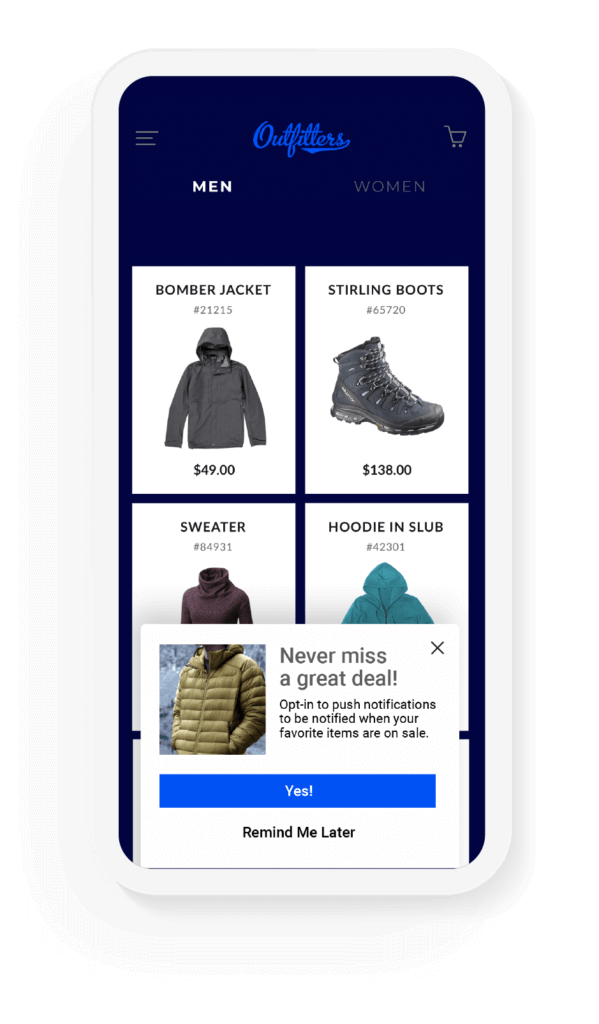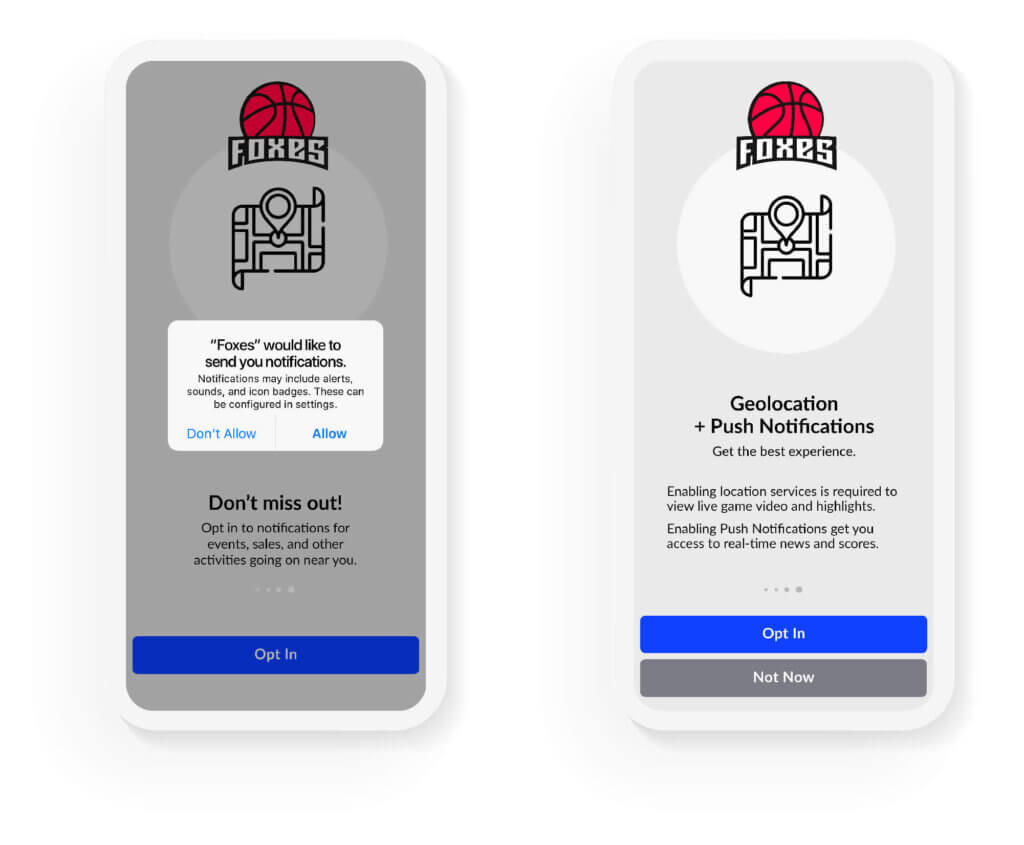
Top 10 Tips to Get the Opt-In
If you send out an app notification but no one is opted-in, did it even push?
Our studies have found that users opted in to notifications are four times more engaged with apps and are retained at double the rate of opt-out users. Notification opt-ins are an important component of a healthy and growing app.
So what can you do to maximize your opt-in rate? We have top 10 tips to help you get that opt-in for your mobile app notifications.
1) Make Sure Your App’s Value Is Clear
It’s never too early to convey your app’s unique value proposition. As early as the app store preview, you should position not only your app’s value, but also the value of opting in to receiving marketing messages like push notifications, in-app messages or other types of app-based notifications. One retailer includes the following in their app store description: “Get exclusive access to app user only sales.”

2) Manage Expectations: Let Them Know How You’ll Use Alerts
When users know what to expect with notifications, they are more likely to opt-in. Explain why users should consider opting in when you make the ask and guide the user through key app functionality. For example, NHL grew its opt-in rate nearly 10% after adding a customized screen before the default dialogue box.
Did You Know: iOS requires apps serve up a default dialogue box to request permission to send push notifications. It has become common practice for this rather generic message to be the first thing a users sees the very first time they open the app so make sure you customize it.
3) Prioritize Preference: Let Users Know How They Can Set Preferences as Part of Your Welcome Series
Helping users understand upfront that they can customize their notification settings to receive only what they want, when they want it, can be a critical nuance to securing the opt-in.
4) Make It Easy to Turn Push Notifications On and Off
Rather than relying on users to navigate system settings in Android and iOS, consider adding an on/off button within your app. Doing so allows users to turn notifications off during busy or inopportune times; for example, not wanting to receive spoiler alerts for the big game they are watching later. More importantly, It may also save your app from deletion for people that simply don’t want to receive notifications no matter how tailored they are to their interests. Or, in the best case scenario, this enables users to easily turn notifications back on.
5) Market Your App in Non-Mobile Settings to Increase Your Possible Opted-in User Base
Brick-and-mortar businesses should promote their apps’ unique value proposition with in-store signage and at the point of sale (POS). Help people understand how it will enrich their experiences, as well as any exclusive offers that will be unlocked by getting the app.
6) Use Email to Persuade Users to Download, install and launch your app, and why they should opt in to push notifications
Already have customer emails? Use them to drive customers to engage with your brand on mobile, and usher in new levels of immediacy and contextual understanding.
7) Sweeten the Deal
Consumers frequently share email addresses in exchange for coupons. Consider what mobile exclusive benefit you might offer.
8) Prompt Mobile Web Users to Download Your App
Every digital property you have should support your app recruitment effort. It can be the difference between just being where consumers can find you to being able to effortlessly reach out and engage them.
Learn more about Cross-Channel Acquisition.
9) Know When to Ask for the Opt-in – and Set the Stage to Ask Again
The opt-in ask should never be once and done. Consider pre-asking (also known as soft-ask) users, and give them time to evaluate the app before asking again through in-app welcome messages or customized screens.

10) Track Users That Opt-Out to Re-solicit with Highly Contextual In-App Messaging
If opted-out users view specific products, visit the “Deals” page, or perform some other in-app activity that signals strong intent, use the insight to tailor in-app messages offering single tap sign-up to related notifications. If users understand the additional and targeted value they’d receive through the immediacy of notifications, they’ll be more likely to reconsider their initial opt-out decision.
Subscribe for updates
If the form doesn't render correctly, kindly disable the ad blocker on your browser and refresh the page.
Related Posts


Meet Emma Patterson – Account Manager Extraordinaire & Culture Club Planner


